Side Catch consists of insects and other invertebrates that have been pinned into boxes to resemble an entomological collection. Certain rules, many of them interestingly aesthetic, apply to pinning insects for entomological collections. For example, butterfly wings should be positioned at correct angle, and neatness is considered important. My collection purposely breaks some of these rules to examine the human-invertebrate relationship and scientific conventions in the field of entomology.
The series includes three collections: Honeybee Collection I-II, Own Collection I-IV, and Side Catch Collection I-III. Partially due to human-induced problems that are causing pollinator decline, honeybee farmers can lose several colonies each year, resulting in piles of dead bees. This lead me to wonder if ordinary bees could some day become rare sought-after collection specimens. However, even though the European honeybee has become the focus of pollinator decline, it is a harmful invasive species outside its natural range. The Own Collection comprises “personal catch” and a data sheet with information such as collecting place coordinates, date and personal notes. I spent months collecting purposely killed insects, such as mosquitos, and also other unfortunate invertebrates that accidentally died because of me. The Side Catch Collection is an actual side catch collection; random invertebrates caught by a biologist who was trapping specific insects for research. I concentrated on this scientifically meaningless catch that would have otherwise been regarded as waste.
The project has received funding from the Finnish Cultural Foundation.

Honeybee Collection I / bees, insect pins, rubber foam
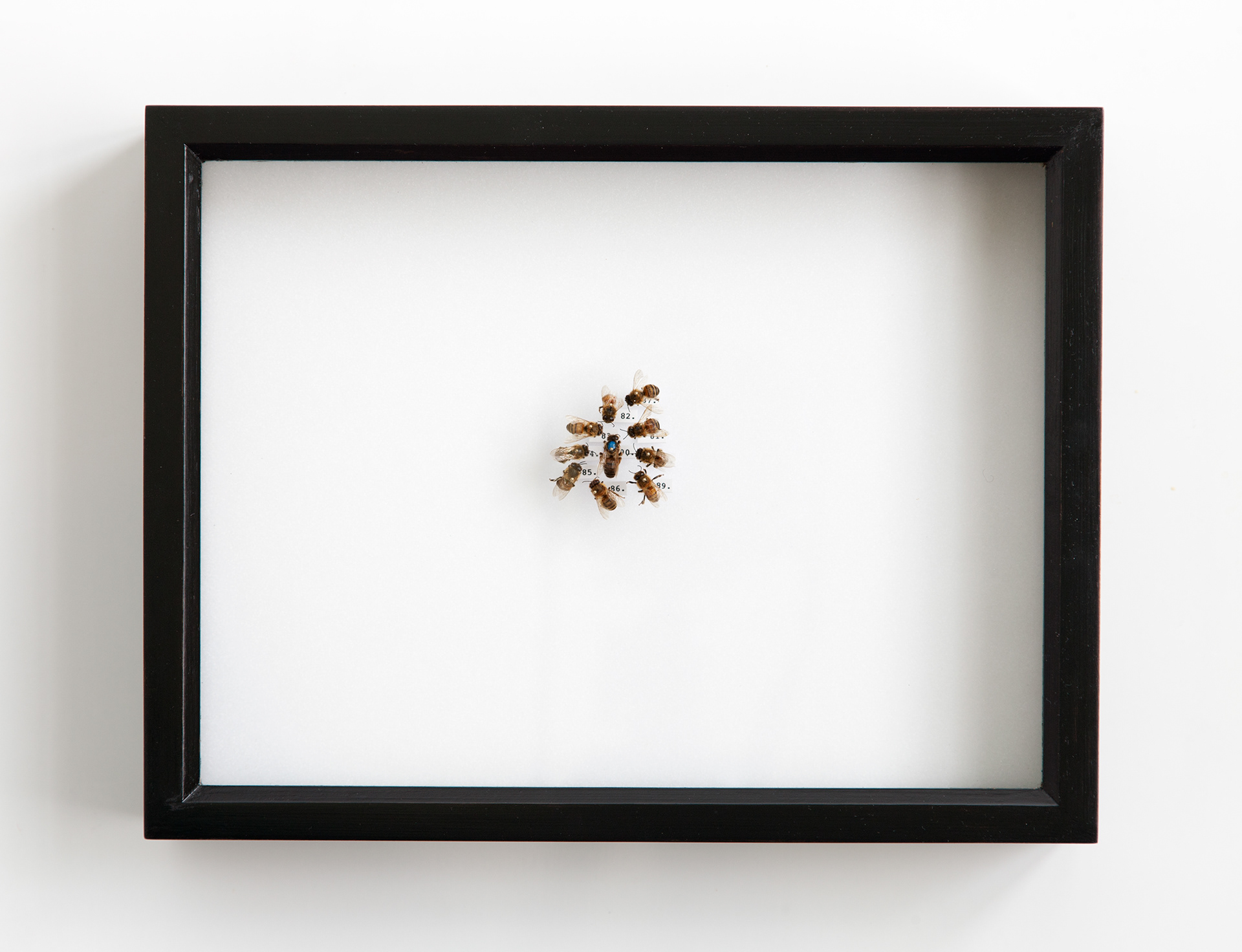
Honeybee Collection II / bees, insect pins, rubber foam
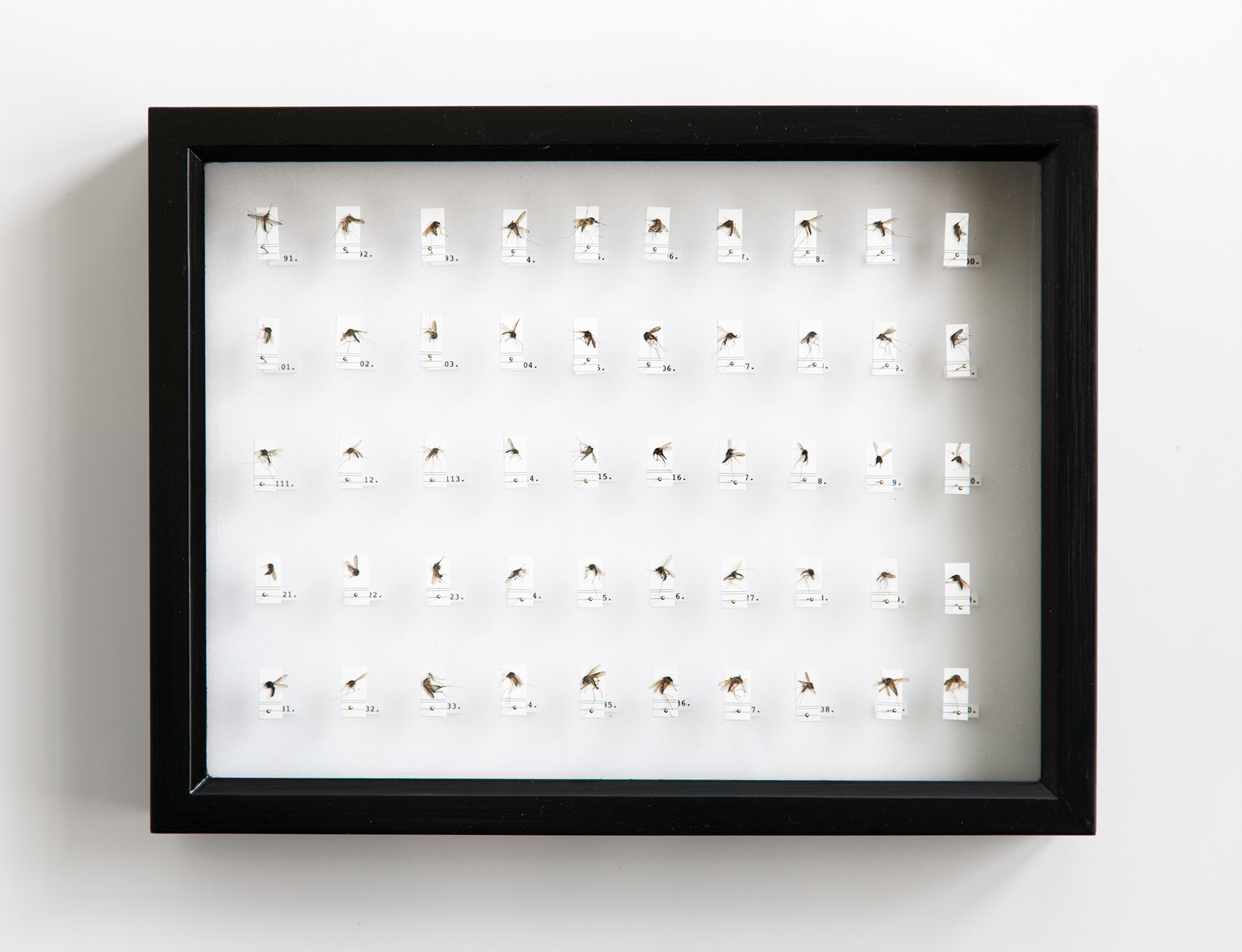
Own Collection I / mosquitoes, insect pins, rubber foam
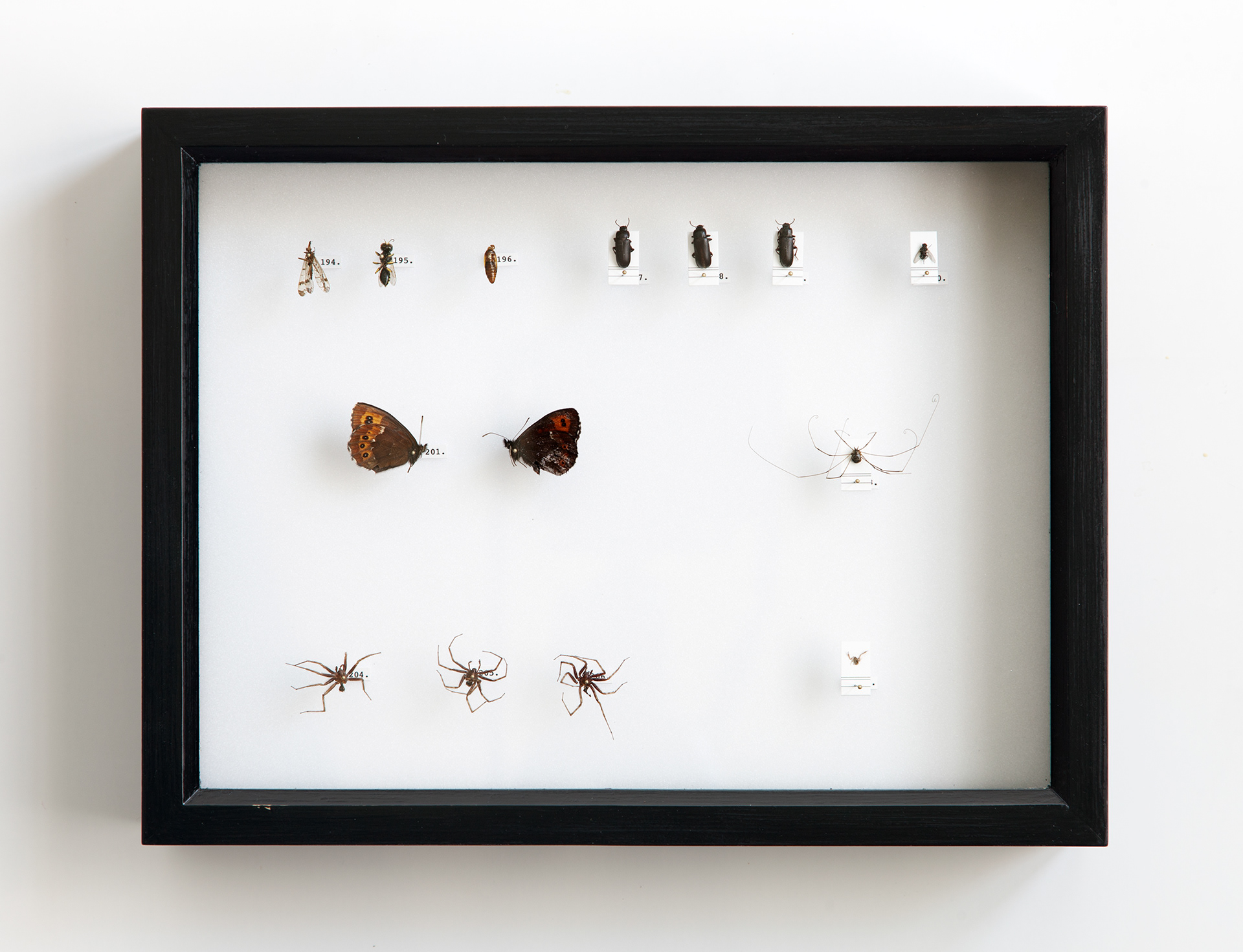
Own Collection II / mixed invertebrates, insect pins, rubber foam
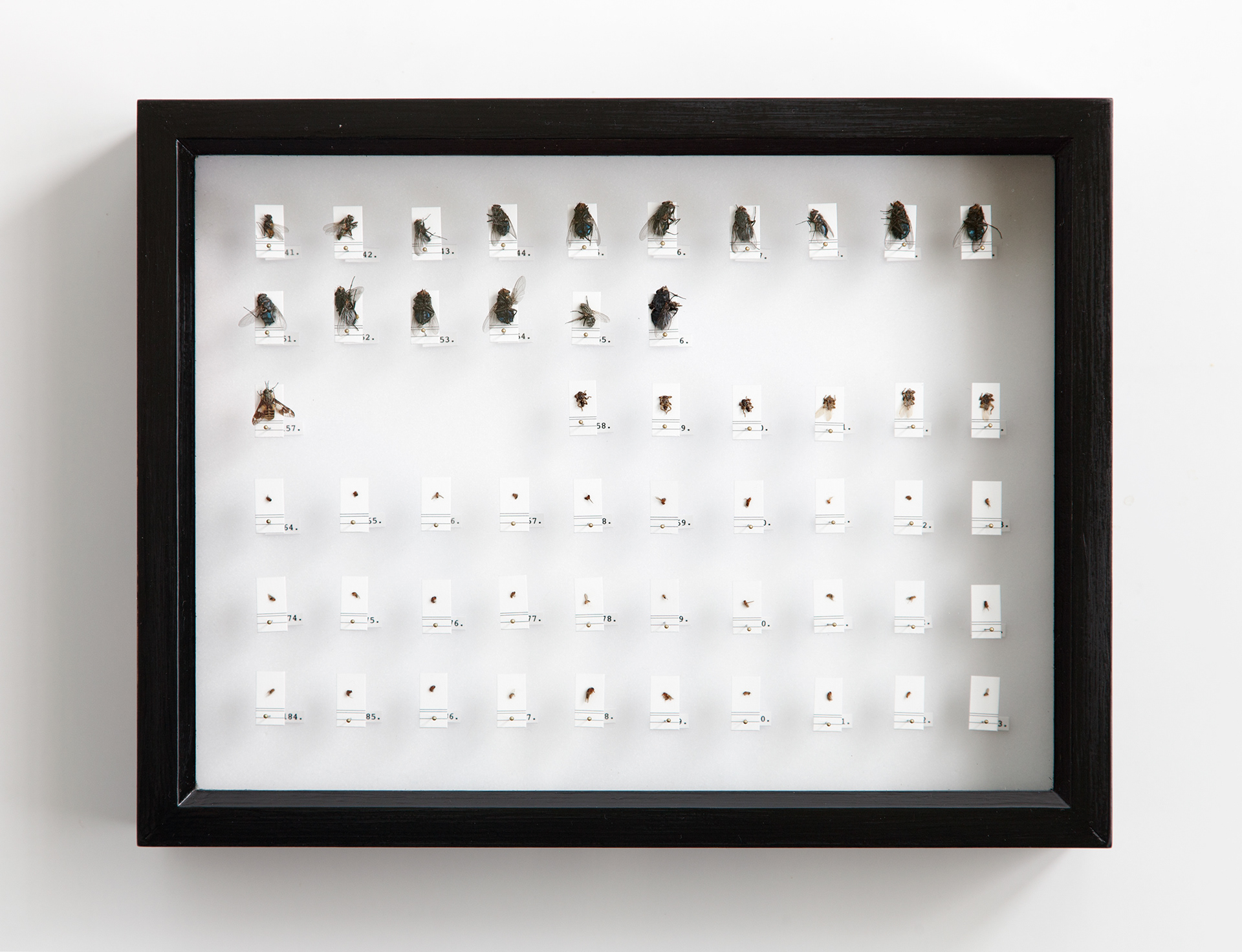
Own Collection III / flies, insect pins, rubber foam
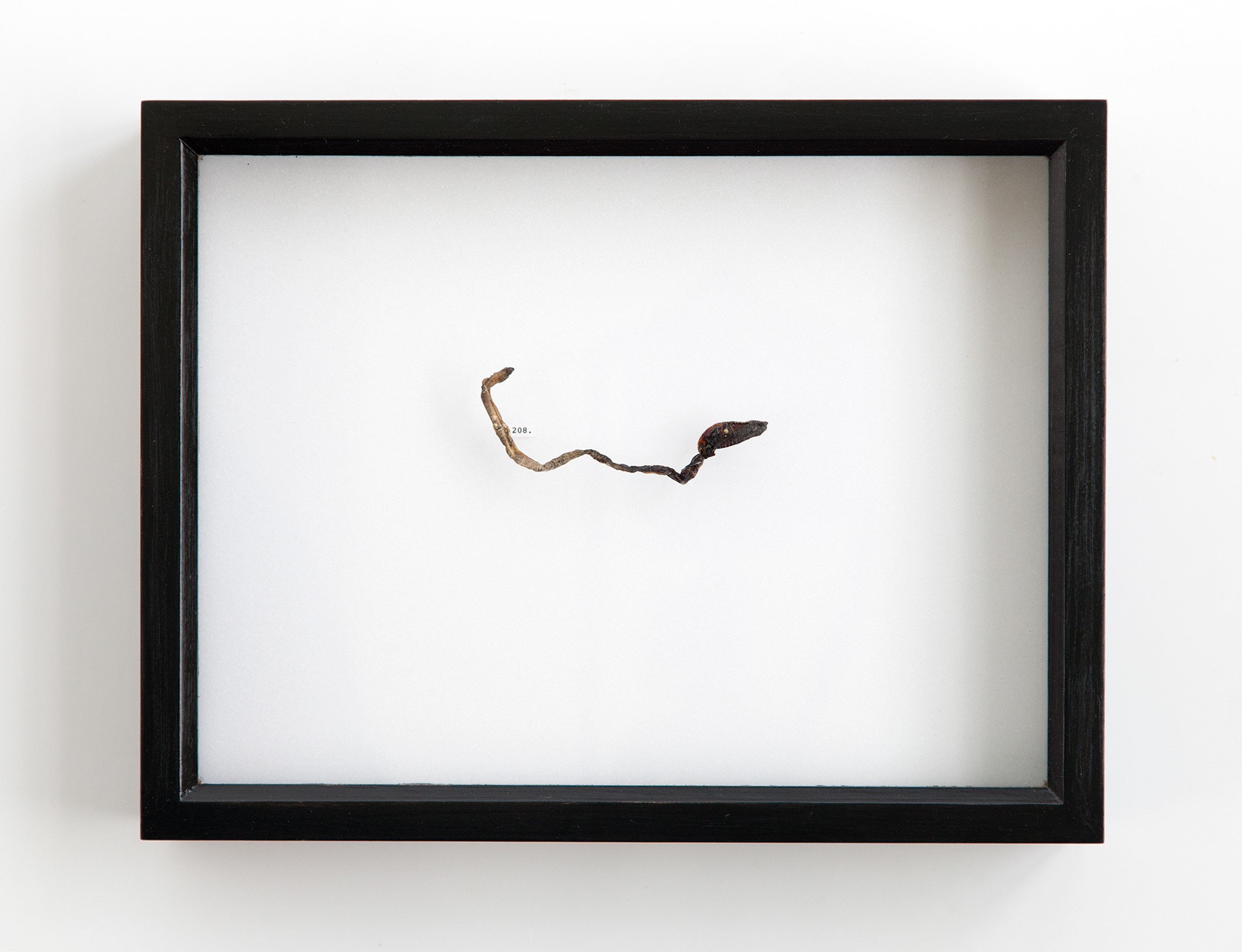
Own Collection IV / earthworm, insect pins, rubber foam
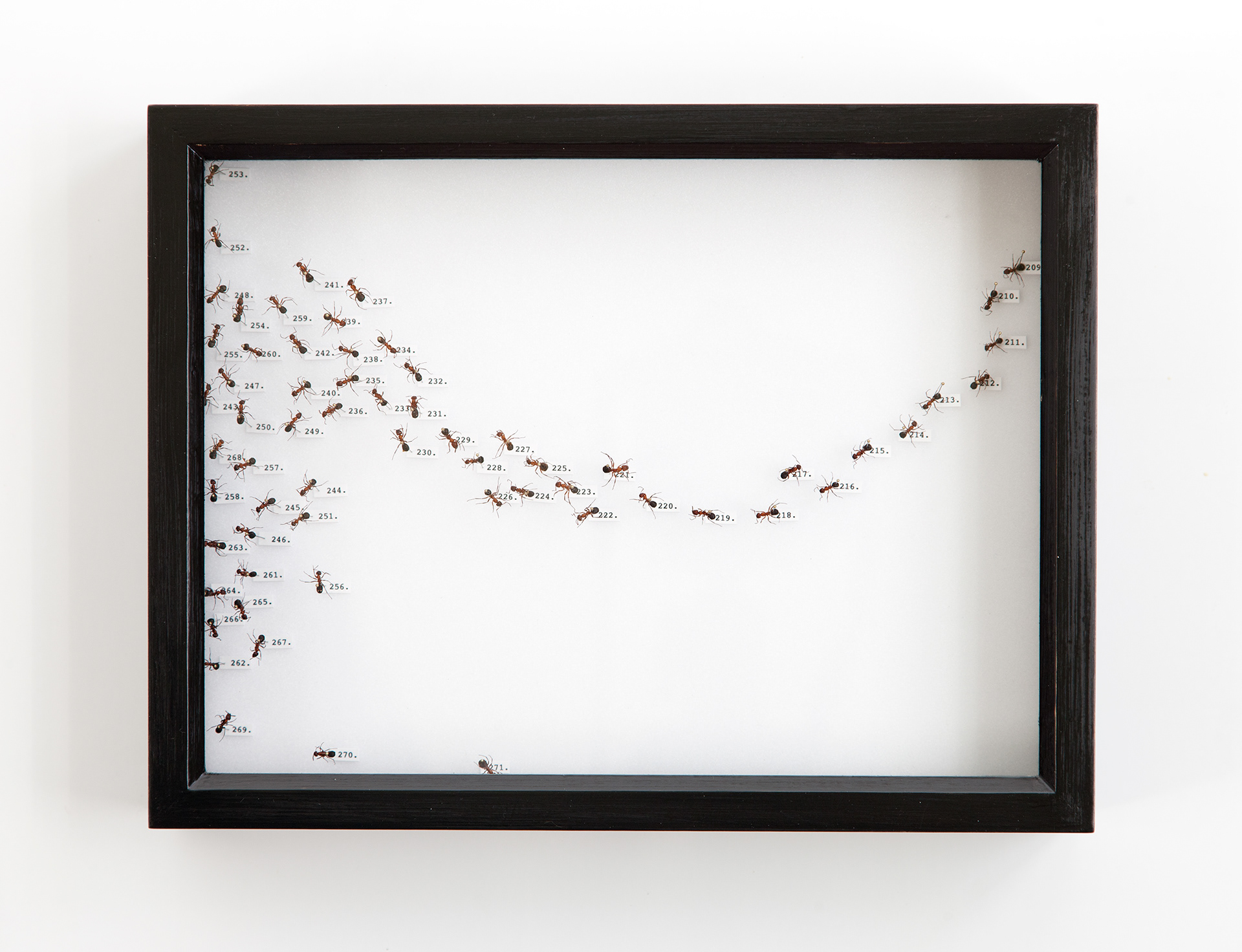
Side Catch Collection I / ants, insect pins, rubber foam
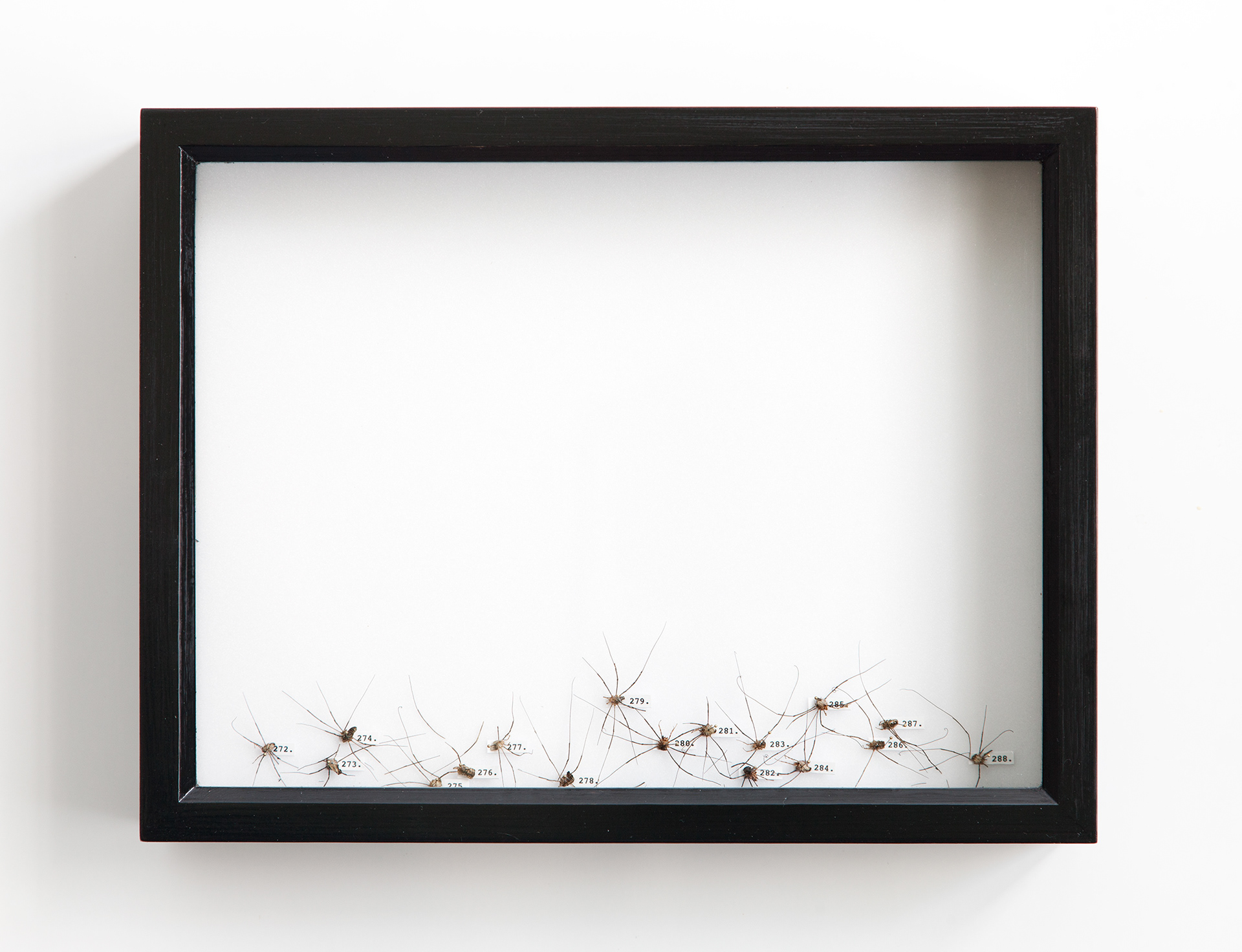
Side Catch Collection II / harvestmen, insect pins, rubber foam
